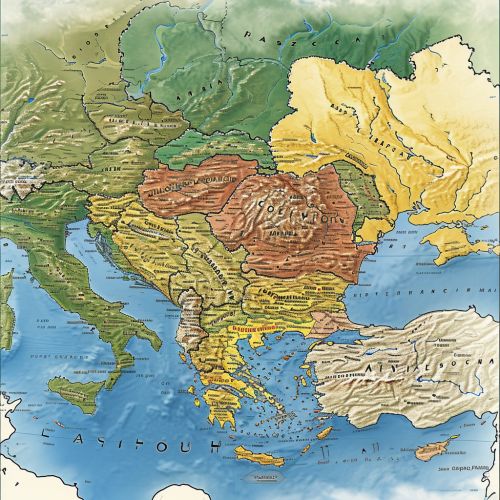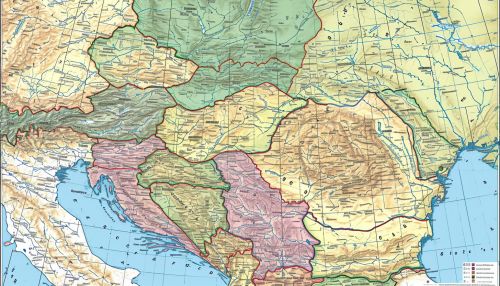South Slavic languages
Overview
The South Slavic languages are one of three branches of the Slavic languages. There are approximately 30 million speakers, mainly in the Balkans. These are separated geographically from speakers of the other two Slavic branches (West and East) by a belt of German, Hungarian and Romanian speakers. The first South Slavic language to be written (in the 9th century) was Old Church Slavonic, later to be replaced by several different dialects in the Early Middle Ages.


Classification
The South Slavic languages are divided into eastern and western dialects. The eastern dialects are Bulgarian and Macedonian, and the western dialects are Serbo-Croatian and Slovene. The Serbo-Croatian language is further divided into Bosnian, Croatian, Montenegrin, and Serbian sub-dialects. The Bulgarian and Macedonian are written in the Cyrillic script, while the others use the Latin script.
History
The South Slavic languages have several periods of development: Old Church Slavonic, Old Slavic, Middle Slavic, and Modern Slavic. The first written South Slavic language, Old Church Slavonic, was used in the 9th century by Saints Cyril and Methodius who translated the Bible and other texts into it. The transition from Old Slavic to Middle Slavic was marked by significant changes in the phonetic and grammatical system of the language.
Phonology
The phonological system of the South Slavic languages is characterized by a number of features. These include the presence of phonemic pitch accent, a series of palatal consonants, and a complex system of inflectional morphology. The phonemic inventory of these languages is quite large, with most having between 25 and 35 consonants and 5 to 10 vowels.
Morphology
The South Slavic languages are highly inflected. Nouns and adjectives have cases; verbs have tense, mood, voice, aspect and non-finite forms. The number of cases in the nominal system varies from two in Bulgarian and Macedonian to seven in Slovene. The verb system is similarly complex, with a high degree of synthetic forms.
Syntax
The syntax of the South Slavic languages is characterized by a relatively free word order, the use of clitic pronouns and particles, and the presence of a pro-drop feature. The word order is typically subject-verb-object, but variations are common due to topicalization or focus.
Sociolinguistics
The sociolinguistic situation of the South Slavic languages is complex due to the historical, political, and cultural factors that have influenced their development and use. For example, the question of whether Bosnian, Croatian, Montenegrin, and Serbian are separate languages or dialects of a single language is a matter of ongoing debate.
